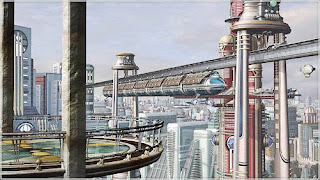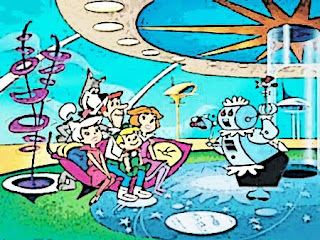Task:
Envision a city ideal!
What makes a city?
What distinguishes urban from for
example rural communities?
Describe this ideal in spatial terms this ideal!
What is the minimal set of parts that
constitute a city?

An ideal city is one that has a good plan, one that is sustainable and fast, one that has a strategic location and good transportation, a city that doesn’t have any economical or agricultural problems. An ideal city is its people, people who bring life, vitality and business to the city. It is ideal when there is consistent growth and movement. And in spatial content it is ideal when its buildings shape the public spaces creating a combination between open and closed, negative spaces for movement and positive for habitat, It is ideal when that city could easily adapt to change and should be planned in the sense that no matter how dense its population is you never feel it is crowded, narrow or small.
The ideal city may also be something that is extremely futuristic as in the cartoon the “Jetsons Family” where there are flying cars and robots. A city = A machine. I think the city in 30 years time would be something similar but not to that extreme. Maybe not flying cars but rather no car at all, a city where the pavement is a flat escalator for example, one that has many levels, many movable bridges and tunnels.

What makes a city is basically the infrastructure and public utilities to survive that city. It should have a certain population density and should generate a certain income and environmental aspects to sustain itself. What distinguishes urban communities from rural is the way of life and the communities’ mentality, along with the population density and financial importance. The minimal set of parts that constitute a city are population, infrastructure and public utilities. Part of being a city in my sense is the streets => (movable platforms), the community => (Happy people), the fumes =>(Green aspects), dirt and pollution => (clean), and finally the regeneration => (development).




 I took the lines from my pattern and built a 3-d sketch cardboard model to see how my 2d pattern would look in 3d.
I took the lines from my pattern and built a 3-d sketch cardboard model to see how my 2d pattern would look in 3d.
 Finally, i started looking at the pattern more as a field and i will now start applying the lines onto a bigger scale to test the spaces that could be created within it.
Finally, i started looking at the pattern more as a field and i will now start applying the lines onto a bigger scale to test the spaces that could be created within it.
 Cells have been moved at a specific rule, creating clusters in different areas.
Cells have been moved at a specific rule, creating clusters in different areas. Those previous lines rule have created some enclosed cells (shapes), here i have offset those shapes creating empty spaces between them.
Those previous lines rule have created some enclosed cells (shapes), here i have offset those shapes creating empty spaces between them. My next step was finding a new pattern within the chosen developed pattern. And i have experimented by finding similar continuous lines running through the pattern vertically.
My next step was finding a new pattern within the chosen developed pattern. And i have experimented by finding similar continuous lines running through the pattern vertically.



